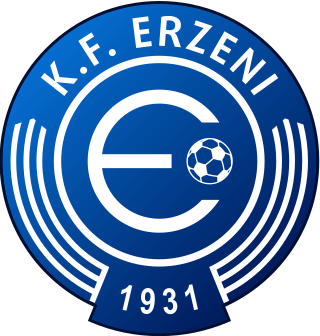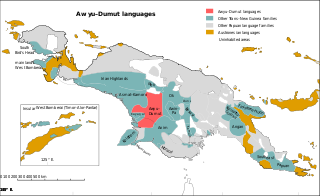Related Research Articles

Papua New Guinea, officially the Independent State of Papua New Guinea, is a country in Oceania that comprises the eastern half of the island of New Guinea and its offshore islands in Melanesia. Its capital, located along its southeastern coast, is Port Moresby. The country is the world's third largest island country, with an area of 462,840 km2 (178,700 sq mi).

Buginese or Bugis is a language spoken by about five million people mainly in the southern part of Sulawesi, Indonesia.

Pares, also known as beef pares, is a term for a serving of Filipino braised beef stew with garlic fried rice, and a bowl of clear soup. It is a popular food particularly associated with specialty roadside diner-style establishments known as Pares Houses that specialize in serving these type of meals. In recent years, it had also become a common dish served in small eateries called karinderya or carinderia that serve economical meals for local residents.
La petite vie was first a stage sketch of the comedy duo Ding et Dong, formed by Claude Meunier and Serge Thériault, and later a hit Quebec television sitcom aired by Radio-Canada from 1993 to 1999. In total, 59 episodes were created plus 3 specials, two for Christmas and one for New Year's 2000.
The Huon Gulf languages are Western Oceanic languages spoken primarily in Morobe Province of Papua New Guinea. They may form a group of the North New Guinea languages, perhaps within the Ngero–Vitiaz branch of that family.
Sulka is a language isolate of New Britain, Papua New Guinea. In 1991, there were 2,500 speakers in eastern Pomio District, East New Britain Province. Villages include Guma in East Pomio Rural LLG. With such a low population of speakers, this language is considered to be endangered. Sulka speakers had originally migrated to East New Britain from New Ireland.
The Tolai language, or Kuanua, is spoken by the Tolai people of Papua New Guinea, who live on the Gazelle Peninsula in East New Britain Province.

Klubi Futbollit Erzeni Shijak is an Albanian football club based in Shijak. They currently compete in the Kategoria Superiore, which is the first tier of Albanian football, and they play their home games at the Tefik Jashari Stadium.
Numbami is an Austronesian language spoken by about 200 people with ties to a single village in Morobe Province, Papua New Guinea. It is spoken in Siboma village, Paiawa ward, Morobe Rural LLG.
Lapan- TUBSat is Indonesia’s first remote sensing satellite, made by the experts from National Institute of Aeronautics and Space and Technical University Berlin (TUB) Germany. The uses of the satellite are for Indonesian natural resources observation and weather forecast for the Indonesian area. Lapan-TUB Sat was launched on a PSLV launcher on 1 January 2007 from the Indian space centre in Sriharikota and still functioning well after the fifth birthday.

Papua New Guinea, a sovereign state in Oceania, is the most linguistically diverse country in the world. According to Ethnologue, there are 839 living languages spoken in the country. In 2006, Papua New Guinea Prime Minister Sir Michael Somare stated that "Papua New Guinea has 832 living languages ." Languages with statutory recognition are Tok Pisin, English, Hiri Motu, and Papua New Guinean Sign Language. Tok Pisin, an English-based creole, is the most widely spoken, serving as the country's lingua franca. Papua New Guinean Sign Language became the fourth officially recognised language in May 2015, and is used by the deaf population throughout the country.
Ngāti Rārua are a Māori iwi (tribe) of the Tainui tribal confederation, descendants of the people who arrived in Aotearoa aboard the Tainui waka (canoe).

The Greater Awyu or Digul River languages, known in earlier classifications with more limited scope as Awyu–Dumut (Awyu–Ndumut), are a family of perhaps a dozen Trans–New Guinea languages spoken in eastern West Papua in the region of the Digul River. Six of the languages are sufficiently attested for a basic description; it is not clear how many of the additional names may be separate languages.

The Kamula–Elevala languages are a small family of the Trans–New Guinea languages spoken in the region of the Elevala River.

The Madang or Madang–Adelbert Range languages are a language family of Papua New Guinea. They were classified as a branch of Trans–New Guinea by Stephen Wurm, followed by Malcolm Ross. William A. Foley concurs that it is "highly likely" that the Madang languages are part of TNG, although the pronouns, the usual basis for classification in TNG, have been "replaced" in Madang. Timothy Usher finds that Madang is closest to the Upper Yuat River languages and other families to its west, but does not for now address whether this larger group forms part of the TNG family.

Papum Pare district is an administrative district in the state of Arunachal Pradesh in India. As of 2011, it is the most populous district of Arunachal Pradesh.

The Savu languages, Hawu and Dhao, are spoken on Savu and Ndao Islands in East Nusa Tenggara, Indonesia.
Dom is a Trans–New Guinea language of the Eastern Group of the Chimbu family, spoken in the Gumine and Sinasina Districts of Chimbu Province and in some other isolated settlements in the western highlands of Papua New Guinea.
The 2017–18 Kosovar Cup was the football knockout competition of Kosovo in the 2017–18 season.
References
- ↑ Pa at Ethnologue (18th ed., 2015) (subscription required)